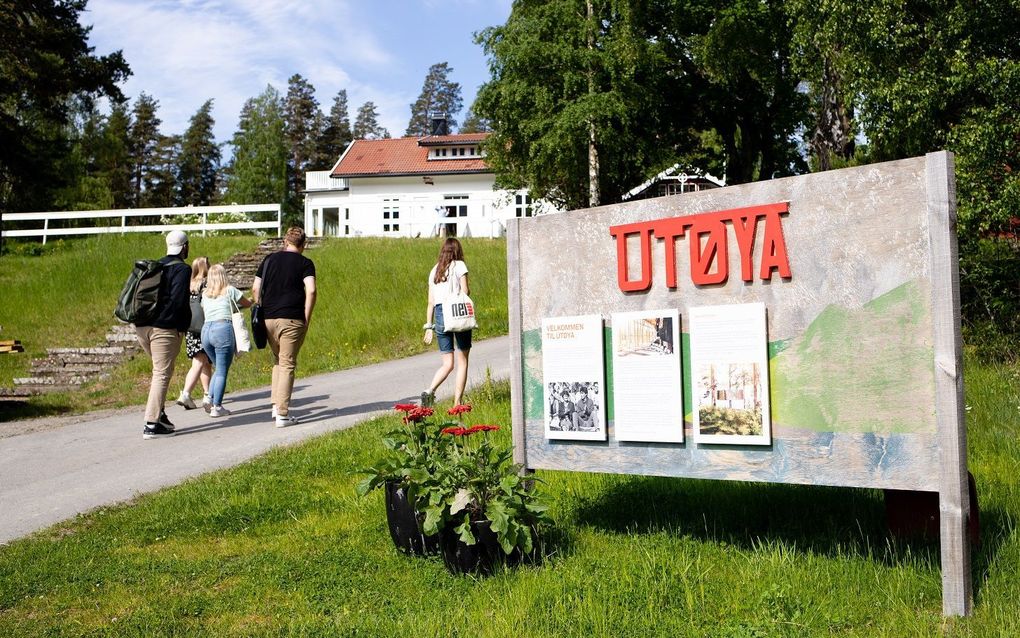Utøya, 10 years after the attack: A struggle between sadness and determination
22-07-2021
Northern Europe
Richard Donk, RD

Ten years after the bloodiest attack in Norway's post-war history, survivors of the Utoya massacre say the country needs to finally face up to the far-right ideology behind the massacre. photo AFP, Petter Berntsen
Northern Europe
In a matter of hours, Anders Breivik wrecked created havoc on a Norwegian youth camp in the summer of 2011. Ten years later, survivors’ grief and determination struggle for prominence vie for pre-eminence. “I will continue the fight against hatred.”
slo, July 22th, 2011. At three-thirty PM, a bomb explodes in front of the Norwegian Prime Minister’s office. The building is badly damaged, several government buildings and the office of the Norwegian daily VG are damaged as well. Eight people are killed.
While chaos and panic reign in the Norwegian capital, Anders Behring Breivik is already on his way to Utøya, about 40 kilometres northwest of Oslo. The annual summer camp of the Workers’ Youth League (AUF), the youth organization of the ruling Workers’ Party, is being held on the island.
Breivik is dressed as a police officer and acts poses as a law enforcement officer who comes to take a look at the island after the news of the bomb attack in Oslo. Armed with a rifle and pistol, he suddenly opens fire on the unsuspecting camp goers. He methodically goes around the island and ends up killing 69 people, most of them teenagers. He even shoots young people who have jumped into the water to escape the bullets. Dozens of other people others people are injured.
Ten years later, the far-right Breivik has served part of the 21-year prison sentence he has been sentenced to. At the end of that period, his detention can be extended by five years each time.
Breivik’s conviction, however, can hardly soften the deep wounds that the attack left. Many survivors struggle with the trauma of the dramatic events of that time.
Uncomfortable
Sindre Lysø was fifteen when the attack on Utøya happened. He is now secretary-general of AUF, which at the time organized the summer camp on the island. He still feels “very uncomfortable” when he talks about his past experiences.

With a girl he didn’t even know, he fled into the bushes when Breivik started shooting. “We were afraid; at the time, however, we didn’t know for what or from whom we should hide.”
When the police finally arrive on the island, many young people are afraid to come out of hiding. After all, the perpetrator was also wearing a uniform. “The first days, we didn’t know what had happened to our friends,” the Norwegian says.
Ten years later, Lysø is able to put things a little more in perspective. “The terrorist attacks of July 22th, 2011 were an attack on Norway and our democracy,” he says. “But they were also directed against the AUF and the Workers’ Party. The massacre on Utøya and the attack on government buildings were planned and carried out by a far-right terrorist. In his worldview, the Social Democrats were the main enemy. He could build up his hatred undisturbed. And in the end, he believed he could kill people for the values he believed in.”
For Lysø, the attacks urged him were an incentive to become even more involved in the political youth organization. “My commitment to our social and democratic values has only grown. My mission is to continue the fight against racism and hatred and to strive for an inclusive society, where there is room for everyone.”
On Thursday, Lysø will take part in the official commemoration, both in Oslo and on Utøya. “After the July 22nd 22th attacks, we often cried together, comforted and held each other. Now we must stand shoulder to shoulder in the fight against extreme points of view. We must use our freedom to defend others. We owe that to the 77 people who died back then.”
Many survivors found that resilience to come to terms with accommodate the events of ten years ago. Photographer Andrea Gjestvang has followed a number of various victims over the past ten years and portrayed them at different ages.
His impressive account does not only show the physical scars left by the attacks but also gives a powerful insight in shows the hope and determination of the survivors. Above all, the wish for a normal life. “I want to get married and start a family. Buy a house, have a car, a dog and a job. Not an ambitious life,” says Aleksandr Sandberg, who hid under a bench in a school during the shooting.
This article was previously published in the Dutch daily Reformatorisch Dagblad, on July 22th, 2021.


